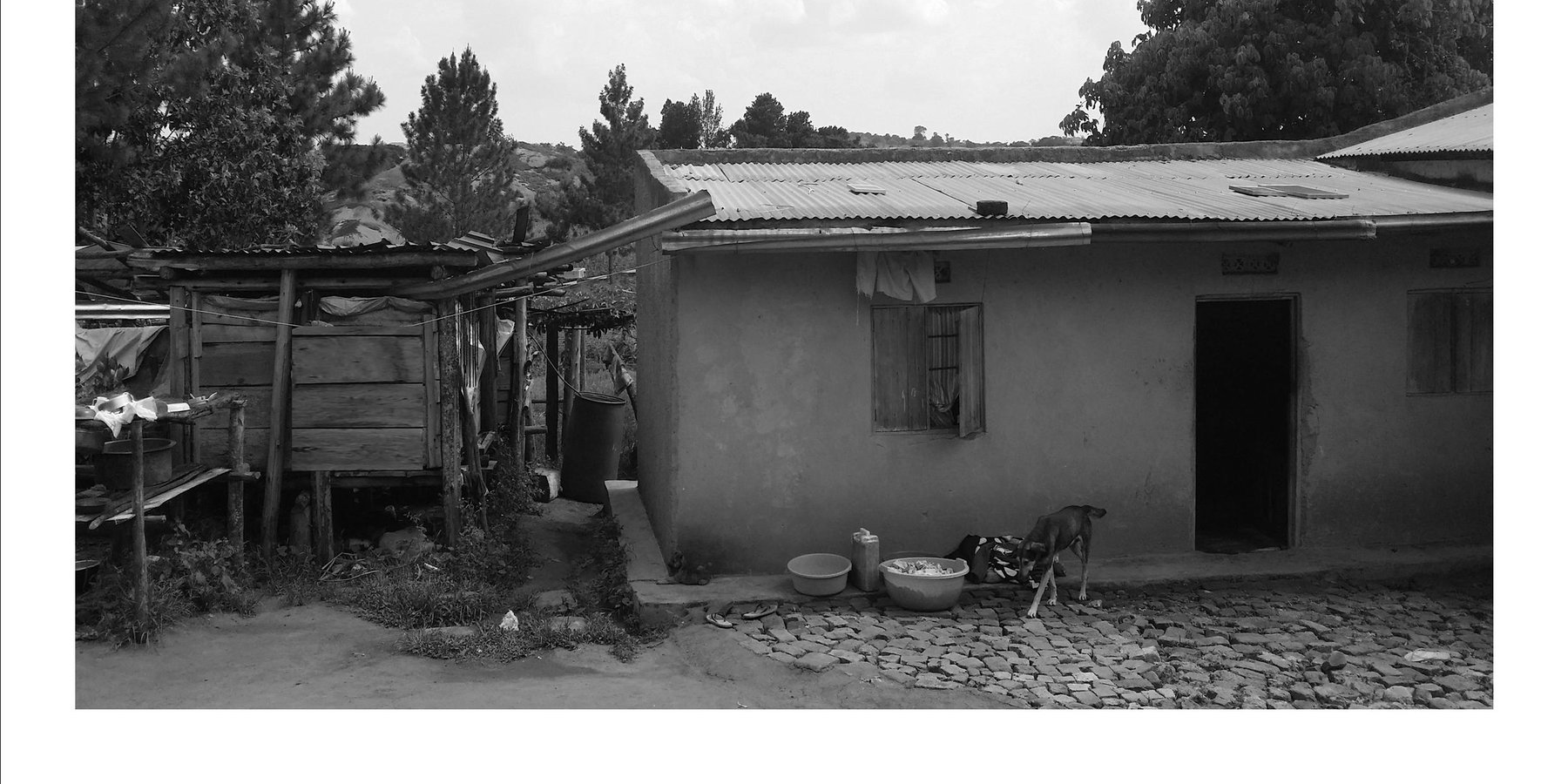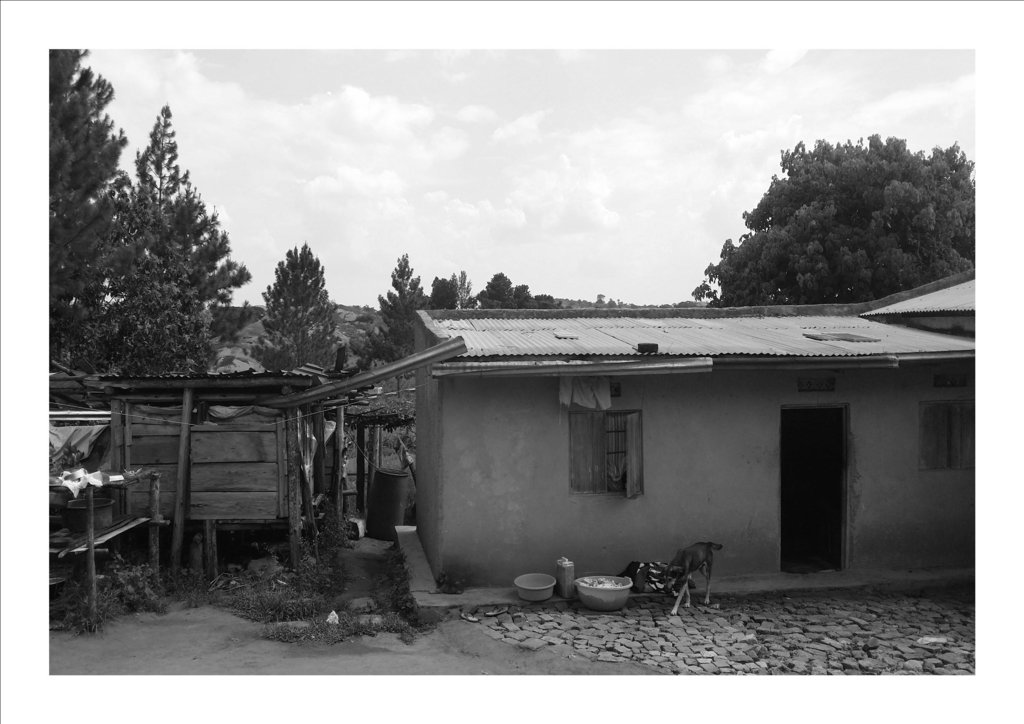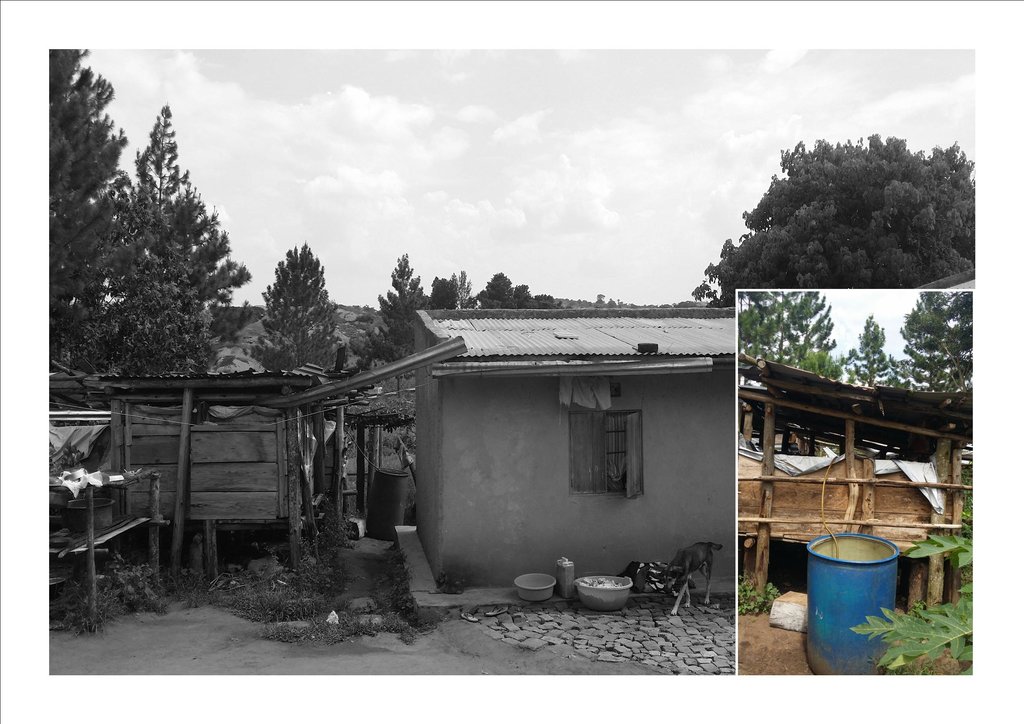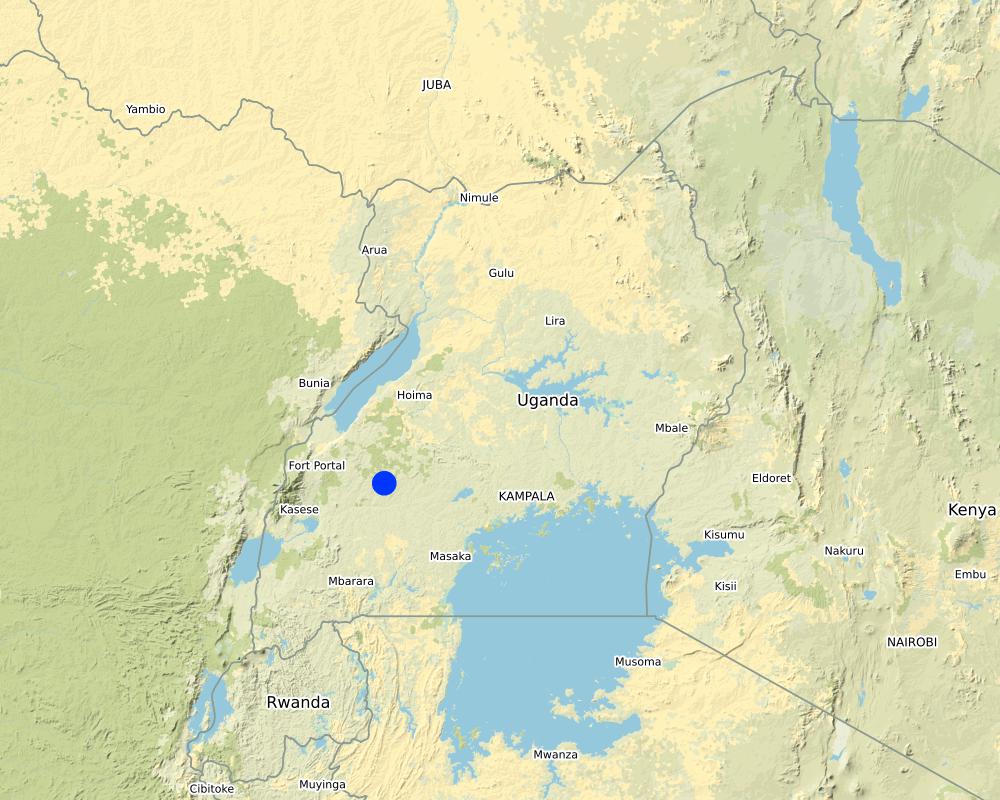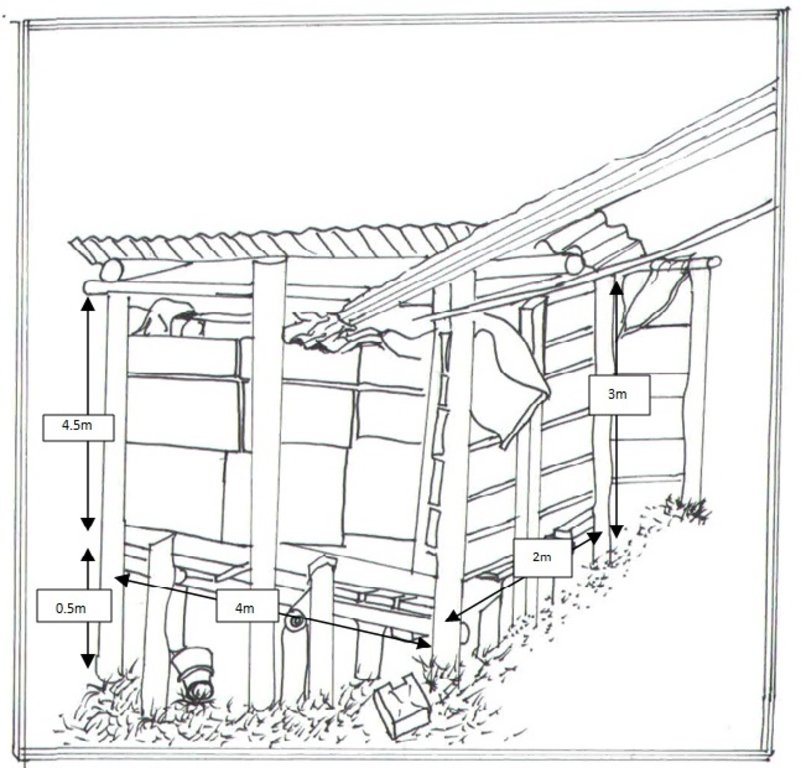Wooden water reservoir for rain water harvesting. [Uganda]
- Creation:
- Update:
- Compiler: Aine Amon
- Editor: Kamugisha Rick Nelson
- Reviewers: Nicole Harari, Udo Höggel
Okutagila amizi aha ibati
technologies_3301 - Uganda
View sections
Expand all Collapse all1. General information
1.2 Contact details of resource persons and institutions involved in the assessment and documentation of the Technology
Key resource person(s)
land user:
Kabanda Deo
Mubende, Mubende Municipality
Uganda
Name of project which facilitated the documentation/ evaluation of the Technology (if relevant)
Scaling-up SLM practices by smallholder farmers (IFAD)Name of the institution(s) which facilitated the documentation/ evaluation of the Technology (if relevant)
National Agricultural Research Organisation (NARO) - Uganda1.3 Conditions regarding the use of data documented through WOCAT
When were the data compiled (in the field)?
13/11/2017
The compiler and key resource person(s) accept the conditions regarding the use of data documented through WOCAT:
Ja
1.4 Declaration on sustainability of the described Technology
Is the Technology described here problematic with regard to land degradation, so that it cannot be declared a sustainable land management technology?
Nee
Comments:
The reservoir is established out of natural and local materials available to community members and stores relatively clean/safe water for future use.
1.5 Reference to Questionnaire(s) on SLM Approaches

water harvesting [Kenya]
Water harvesting for agricultural production in ASALS.
- Compiler: Philippe Zahner
2. Description of the SLM Technology
2.1 Short description of the Technology
Definition of the Technology:
A gutter system constructed on the farmer’s house-roof collects rainwater and directs it into a constructed reservoir raised off the ground with interior walls lined with water-proof tarpaulin. The reservoir has a maximum capacity of 8,000 liters of water; clean enough for irrigation, livestock and domestic use during seasons of scarcity. The reservoir is raised off of ground to minimize contamination and any possible accidents.
2.2 Detailed description of the Technology
Description:
The wooden water reservoir system was introduced to the farmer by staff of the area's local government as a demonstration site to educate others on how to cheaply harvest and store rainwater in a relatively clean form for domestic, livestock and irrigation use. The farmer’s house was fitted with gutters to tap rainwater and direct it into the water reservoir. The water collected is used to buffer the water scarcity during the dry season, which normally stresses livestock and crops in the area. The water can be stored for as long as three months, depending on the size of the water reservoir and the use of the water.
The establishment of the technology requires a clean roof for collecting rainwater, gutters, poles, iron sheets, tarpaulin, hose pipe, jerry can and nails. Further equipment required include; a hammer, hoe and panga (large knife for weeding and forest works). At the farm in Kyegegwa, the reservoir is constructed 3 meters away from the farmer’s main house located at the top of a gently sloping hill. The establishment process involves: leveling of the site on which the technology is planned and constructing a water reservoir supported by a wooden structure. The support structure is constructed using four poles made in such a way that the two front poles are taller (5m) while the two poles behind are shorter (3m). This will give the roof a slight slope to prevent rainwater from stagnating on the roof. A raised rectangular floor supported by the poles is then established at a height of 0.5m above ground. The rectangular reservoir base dimensions are 1m×4m×2m (h×l×w) and is divided into 4 compartment. Each of these, lined with water-tight tarpaulin, can hold 2000 litres of water. The water so collected in the reservoir can be extracted under gravity through a 1.5cm diameter hose pipe into a jerry can placed below the reservoir.
The cost of establishment and durability of this rainwater harvesting system is mainly dependent on the type of materials and gutters used. In Kyegegwa District, wood for construction of the system is locally available valued at US$ 67.99 for the construction of the reservoir system. The iron sheets, gutters and nails are acquired from Kyegegwa Town where they are valued at US$ 127.28. The labor required is also locally available where it takes four men to establish the structure at a total cost of US$ 17.95 in three days.
The water reservoir is semi-permanent and can last for about 1.5 years depending on the quality of materials used. The maintenance activities include cleaning of the reservoir every month and repairing of the worn out parts at the end of the wet season. The farmer strongly recommends the technology since most of the materials and labour used are relatively cheap and locally available. The reservoir is raised off the ground to reduce contamination and minimize possible accidents with children and livestock. Despite the open space above the water level and the roof, the farmer has observed that the reservoir does not breed obnoxious vectors like mosquitoes. The water collected is relatively clean and the farmer uses it for irrigation of home gardens and for watering of livestock. When properly filtered it is as well used for domestic purposes. The technology can be improved by using treated poles, stronger wood material and tarpaulin of improved quality.
2.3 Photos of the Technology
General remarks regarding photos:
The black and white view shows the water system including the house roof, improvised iron sheet gutters and water reservoir structure. The colored picture shows a hose pipe connected into the reservoir to deliver water into the plastic tank by forces of gravity
2.4 Videos of the Technology
Date:
13/11/2017
Location:
Kyeggegwa Town Council
Name of videographer:
Amon Aine
2.5 Country/ region/ locations where the Technology has been applied and which are covered by this assessment
Country:
Uganda
Region/ State/ Province:
Western
Further specification of location:
Kyeggegwa
Comments:
The project is located at the top of a gently sloping hill
Map
×2.6 Date of implementation
Indicate year of implementation:
2015
2.7 Introduction of the Technology
Specify how the Technology was introduced:
- through projects/ external interventions
Comments (type of project, etc.):
Local Government project to help local farmers adopting water storage systems for use during drought.
3. Classification of the SLM Technology
3.1 Main purpose(s) of the Technology
- improve production
- reduce risk of disasters
- adapt to climate change/ extremes and its impacts
- create beneficial economic impact
3.2 Current land use type(s) where the Technology is applied

Settlements, infrastructure
- Settlements, buildings
Remarks:
The farmer's house roof top is used as the rain water catchment area.
3.3 Further information about land use
Water supply for the land on which the Technology is applied:
- mixed rainfed-irrigated
Number of growing seasons per year:
- 2
Specify:
March-May and Sept-Nov. However, due to climate change, the seasons vary significantly in length and amount of rain recieved.
3.4 SLM group to which the Technology belongs
- water harvesting
3.5 Spread of the Technology
Specify the spread of the Technology:
- applied at specific points/ concentrated on a small area
3.6 SLM measures comprising the Technology

structural measures
- S6: Walls, barriers, palisades, fences
- S7: Water harvesting/ supply/ irrigation equipment
3.7 Main types of land degradation addressed by the Technology

water degradation
- Ha: aridification
Comments:
To provide safe water for domestic, livestock and irrigation use especially during the drought period.
3.8 Prevention, reduction, or restoration of land degradation
Specify the goal of the Technology with regard to land degradation:
- prevent land degradation
- adapt to land degradation
Comments:
Harvesting rain water reduces the need for constructing dams.
4. Technical specifications, implementation activities, inputs, and costs
4.1 Technical drawing of the Technology
4.2 Technical specifications/ explanations of technical drawing
The support structure is constructed using four poles made in such a way that the two front poles are taller (5 m) while the two poles behind are shorter (3 m), giving the roof a slight slope to prevent rainwater from stagnating on the roof. A raised rectangular floor supported by the poles is then established at a height of 0.5 m above ground. A cuboid reservoir of dimensions 1 m×4 m×2 m (h×l×w) is constructed with wooden panels; divided into four compartments and placed on the rectangular floor. Each compartment, to hold 2,000 liter of water, is lined with water-tight tarpaulin. Water from the reservoir can be extracted under gravity through a 1.5 cm diameter hose pipe into a jerry can placed below the reservoir.
4.3 General information regarding the calculation of inputs and costs
Specify how costs and inputs were calculated:
- per Technology unit
Specify unit:
Water Reservior
Specify volume, length, etc. (if relevant):
Capacity 8000 liters, segregated into 4 compartments
other/ national currency (specify):
Uganda shillings
Indicate exchange rate from USD to local currency (if relevant): 1 USD =:
3638.35
Indicate average wage cost of hired labour per day:
20000
4.4 Establishment activities
| Activity | Type of measure | Timing | |
|---|---|---|---|
| 1. | Site selection | Structural | Before onset of rain |
| 2. | Clearing and leveling | Structural | Before onset of rain |
| 3. | Erection of poles | Structural | Before onset of rain |
| 4. | Establishment of floor, walls and roofing | Structural | Before onset of rain |
| 5. | Establishment of taupline and gutters | Structural | Before onset of rain |
4.5 Costs and inputs needed for establishment
| Specify input | Unit | Quantity | Costs per Unit | Total costs per input | % of costs borne by land users | |
|---|---|---|---|---|---|---|
| Labour | Builders | Man day | 8.0 | 22500.0 | 180000.0 | 100.0 |
| Equipment | Hammer | pieces | 30000.0 | 1.0 | 30000.0 | 100.0 |
| Equipment | Panga | pieces | 9000.0 | 1.0 | 9000.0 | 100.0 |
| Equipment | Dibber | pieces | 15000.0 | 1.0 | 15000.0 | 100.0 |
| Equipment | Hoe | pieces | 10000.0 | 1.0 | 10000.0 | 100.0 |
| Plant material | Spade | pieces | 15000.0 | |||
| Plant material | Poles | pieces | 12.0 | 3000.0 | 36000.0 | 100.0 |
| Plant material | Timber | pieces | 12.0 | 10000.0 | 120000.0 | 100.0 |
| Plant material | Wood | pieces | 8.0 | 1500.0 | 12000.0 | 100.0 |
| Construction material | Tarpaulin | peices | 1.0 | 45000.0 | 45000.0 | |
| Construction material | Iron sheet | peices | 6.0 | 25000.0 | 150000.0 | |
| Construction material | Nails | Kg | 4.0 | 6000.0 | 24000.0 | |
| Construction material | Hose pipe | Meters | 3.0 | 3000.0 | 9000.0 | |
| Construction material | Wood and poles | Pieces | 50.0 | 4900.0 | 245000.0 | |
| Total costs for establishment of the Technology | 885000.0 | |||||
If land user bore less than 100% of costs, indicate who covered the remaining costs:
Kyegegwa District Local Government Community Development Fund.
Comments:
The poles and wood are from the farmer's forest. The labor used was also family labor.
4.6 Maintenance/ recurrent activities
| Activity | Type of measure | Timing/ frequency | |
|---|---|---|---|
| 1. | Cleaning the reservoir/ tarpaulin and unblocking gutters | Management | Twice in the wet season |
| 2. | Renovation of the structure | Structural | Once a year |
| 3. | Replacement of the taupline | Structural | Once a year |
4.7 Costs and inputs needed for maintenance/ recurrent activities (per year)
| Specify input | Unit | Quantity | Costs per Unit | Total costs per input | % of costs borne by land users | |
|---|---|---|---|---|---|---|
| Labour | Men | 2.0 | 20000.0 | 40000.0 | 100.0 | |
| Equipment | Hose pipe | meters | 3.0 | 2000.0 | 6000.0 | 100.0 |
| Equipment | Jerrycans | 20litres | 2.0 | 9000.0 | 18000.0 | 100.0 |
| Construction material | Poles | pieces | 6.0 | 3000.0 | 18000.0 | 100.0 |
| Construction material | Timber | pieces | 6.0 | 10000.0 | 60000.0 | 100.0 |
| Construction material | Wood | pieces | 5.0 | 1500.0 | 7500.0 | 100.0 |
| Total costs for maintenance of the Technology | 149500.0 | |||||
If land user bore less than 100% of costs, indicate who covered the remaining costs:
Kyegegwa District Local Government
4.8 Most important factors affecting the costs
Describe the most determinate factors affecting the costs:
The nature of material used for example wood or metal and the labor hired to construct the system.
5. Natural and human environment
5.1 Climate
Annual rainfall
- < 250 mm
- 251-500 mm
- 501-750 mm
- 751-1,000 mm
- 1,001-1,500 mm
- 1,501-2,000 mm
- 2,001-3,000 mm
- 3,001-4,000 mm
- > 4,000 mm
Specifications/ comments on rainfall:
The rain seasons run from March-May and Sept-Nov.
Agro-climatic zone
- humid
5.2 Topography
Slopes on average:
- flat (0-2%)
- gentle (3-5%)
- moderate (6-10%)
- rolling (11-15%)
- hilly (16-30%)
- steep (31-60%)
- very steep (>60%)
Landforms:
- plateau/plains
- ridges
- mountain slopes
- hill slopes
- footslopes
- valley floors
Altitudinal zone:
- 0-100 m a.s.l.
- 101-500 m a.s.l.
- 501-1,000 m a.s.l.
- 1,001-1,500 m a.s.l.
- 1,501-2,000 m a.s.l.
- 2,001-2,500 m a.s.l.
- 2,501-3,000 m a.s.l.
- 3,001-4,000 m a.s.l.
- > 4,000 m a.s.l.
Indicate if the Technology is specifically applied in:
- not relevant
5.3 Soils
Soil depth on average:
- very shallow (0-20 cm)
- shallow (21-50 cm)
- moderately deep (51-80 cm)
- deep (81-120 cm)
- very deep (> 120 cm)
Soil texture (topsoil):
- medium (loamy, silty)
Soil texture (> 20 cm below surface):
- medium (loamy, silty)
Topsoil organic matter:
- medium (1-3%)
5.4 Water availability and quality
Ground water table:
> 50 m
Availability of surface water:
medium
Water quality (untreated):
poor drinking water (treatment required)
Is water salinity a problem?
Nee
Is flooding of the area occurring?
Nee
5.5 Biodiversity
Species diversity:
- medium
Habitat diversity:
- medium
5.6 Characteristics of land users applying the Technology
Sedentary or nomadic:
- Sedentary
Market orientation of production system:
- subsistence (self-supply)
Off-farm income:
- 10-50% of all income
Relative level of wealth:
- average
Individuals or groups:
- individual/ household
Level of mechanization:
- manual work
Gender:
- men
Age of land users:
- elderly
5.7 Average area of land owned or leased by land users applying the Technology
- < 0.5 ha
- 0.5-1 ha
- 1-2 ha
- 2-5 ha
- 5-15 ha
- 15-50 ha
- 50-100 ha
- 100-500 ha
- 500-1,000 ha
- 1,000-10,000 ha
- > 10,000 ha
Is this considered small-, medium- or large-scale (referring to local context)?
- medium-scale
5.8 Land ownership, land use rights, and water use rights
Land ownership:
- individual, titled
Land use rights:
- individual
Water use rights:
- communal (organized)
- individual
5.9 Access to services and infrastructure
health:
- poor
- moderate
- good
education:
- poor
- moderate
- good
technical assistance:
- poor
- moderate
- good
employment (e.g. off-farm):
- poor
- moderate
- good
markets:
- poor
- moderate
- good
energy:
- poor
- moderate
- good
roads and transport:
- poor
- moderate
- good
drinking water and sanitation:
- poor
- moderate
- good
financial services:
- poor
- moderate
- good
6. Impacts and concluding statements
6.1 On-site impacts the Technology has shown
Socio-economic impacts
Production
crop production
crop quality
fodder production
fodder quality
animal production
wood production
forest/ woodland quality
non-wood forest production
risk of production failure
product diversity
production area
land management
Water availability and quality
drinking water availability
Quantity after SLM:
80000 litres in storage by end of the wet season
drinking water quality
Comments/ specify:
The water stored in the tank is relatively clean compared to that harvested previously using the run off harvest system.
water availability for livestock
water quality for livestock
irrigation water availability
irrigation water quality
Income and costs
expenses on agricultural inputs
Comments/ specify:
Costs on irrigation and income from extended growing seasons
farm income
diversity of income sources
economic disparities
workload
Socio-cultural impacts
food security/ self-sufficiency
health situation
Comments/ specify:
Improved nutrition since the irrigation water supports growth of vegetables
cultural opportunities
recreational opportunities
community institutions
Ecological impacts
Water cycle/ runoff
harvesting/ collection of water
surface runoff
excess water drainage
Soil
soil moisture
Comments/ specify:
Through irrigation in the dry season
nutrient cycling/ recharge
Comments/ specify:
The water facilitates dissolution of nutrients
soil organic matter/ below ground C
acidity
Biodiversity: vegetation, animals
Vegetation cover
biomass/ above ground C
plant diversity
invasive alien species
animal diversity
Climate and disaster risk reduction
drought impacts
6.2 Off-site impacts the Technology has shown
water availability
buffering/ filtering capacity
6.3 Exposure and sensitivity of the Technology to gradual climate change and climate-related extremes/ disasters (as perceived by land users)
Climate-related extremes (disasters)
Climatological disasters
| How does the Technology cope with it? | |
|---|---|
| drought | well |
Other climate-related consequences
Other climate-related consequences
| How does the Technology cope with it? | |
|---|---|
| extended growing period | well |
| Livestock and domestic water | well |
6.4 Cost-benefit analysis
How do the benefits compare with the establishment costs (from land users’ perspective)?
Short-term returns:
positive
Long-term returns:
positive
How do the benefits compare with the maintenance/ recurrent costs (from land users' perspective)?
Short-term returns:
very positive
Long-term returns:
very positive
6.5 Adoption of the Technology
- 1-10%
Of all those who have adopted the Technology, how many have did so spontaneously, i.e. without receiving any material incentives/ payments?
- 50-90%
6.6 Adaptation
Has the Technology been modified recently to adapt to changing conditions?
Ja
other (specify):
Limited finances
Specify adaptation of the Technology (design, material/ species, etc.):
The farmer improvised iron sheets as gutters to collect water from the roof into the reservoir.
6.7 Strengths/ advantages/ opportunities of the Technology
| Strengths/ advantages/ opportunities in the land user’s view |
|---|
| Most of the materials are cheap and locally available. |
| The establishment process is not so complex and can easily be learnt by the local workers. |
| The tarpaulin used is relatively cheap and long lasting. |
| Strengths/ advantages/ opportunities in the compiler’s or other key resource person’s view |
|---|
| The farmer easily benefits from 2 annual rainy seasons. |
| The system is raised off ground which minimizes contamination and accidents. |
| The water is kept in a relatively clean status for livestock, irrigation and domestic use. |
6.8 Weaknesses/ disadvantages/ risks of the Technology and ways of overcoming them
| Weaknesses/ disadvantages/ risks in the land user’s view | How can they be overcome? |
|---|---|
| The water system is open to contamination. | Need to construct a wall net to protect the water from contamination |
| The materials (wood) used are prone to destruction by insects which increases maintenance costs. | Use of metallic or concrete poles |
| Weaknesses/ disadvantages/ risks in the compiler’s or other key resource person’s view | How can they be overcome? |
|---|---|
| The taupline is a temporally reservoir that needs routine replacement. | Use of plastic materials or construction of concrete walls. |
| In case of infestation with insects like termites, the poles will suffer damage. | Use treated wood poles or metal poles. |
7. References and links
7.1 Methods/ sources of information
- field visits, field surveys
1
- interviews with land users
1
7.2 References to available publications
Title, author, year, ISBN:
Rain Water Harvesting Handbook, Ministry of Water and Environment
Available from where? Costs?
https://www.mwe.go.ug/sites/default/files/library/Rain%20Water%20Harvesting%20Handbook.pdf
7.3 Links to relevant information which is available online
Title/ description:
Rainwater Reservoirs above Ground Structures for Roof Catchment
URL:
http://www.itacanet.org/doc-archive-eng/water/Rainwater_reservoirs_GTZ.pdf
Links and modules
Expand all Collapse allLinks

water harvesting [Kenya]
Water harvesting for agricultural production in ASALS.
- Compiler: Philippe Zahner
Modules
No modules


